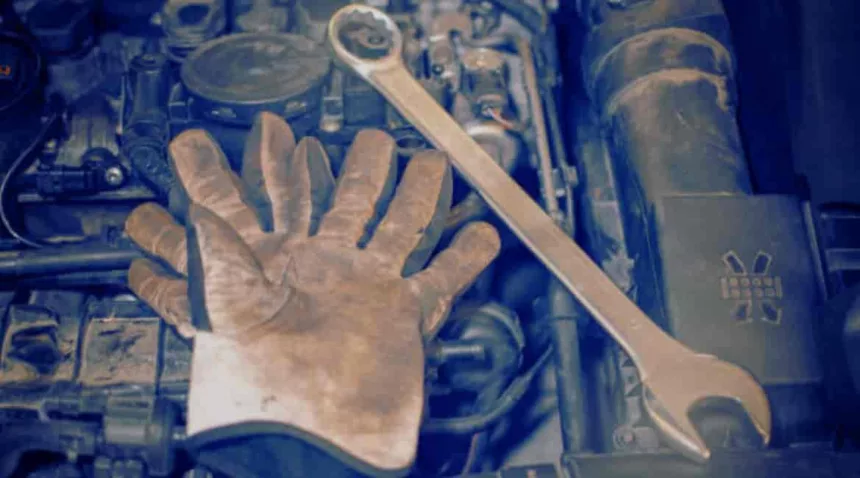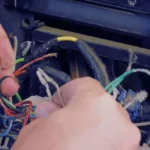Your car’s engine is the heart of your vehicle, and it’s essential to keep it in good working order to ensure a safe and reliable ride. Engine problems can range from minor annoyances to major breakdowns, so it’s important to be able to identify and diagnose them early on.
This article on IchieTech will provide you with a comprehensive guide on how to diagnose and repair car engine problems. We’ll cover common symptoms, diagnostic techniques, and repair procedures for a variety of engine issues.
Common Engine Problems
There are a number of common engine problems that can occur in cars. Some of the most frequent ones include:
- Rough idling: This is when the engine vibrates or shakes excessively when idling.
- Loss of power: This is when the engine feels sluggish and lacks acceleration.
- Strange noises: These can be knocking, rattling, or hissing sounds coming from the engine.
- Illuminated check engine light: This light indicates that there is a problem with the engine that needs to be addressed.
- Overheating: This is when the engine temperature exceeds its normal operating range.
- Excessive oil consumption: This is when the engine burns oil at an abnormally high rate.
- Leaking fluids: This can be oil, coolant, or other fluids leaking from the engine.
Diagnosing Engine Problems
Diagnosing engine problems can be a challenging task, but there are some general steps that you can follow to narrow down the possibilities:
Step 1: Listen to Your Engine
One of the simplest ways to identify potential issues is by paying attention to the sounds your engine makes. Unusual noises, such as knocking, ticking, or hissing, can provide valuable clues about underlying problems. A knocking sound, for example, might indicate an issue with the engine bearings, while a hissing noise could point to a vacuum leak.
Step 2: Check the Warning Lights
Modern cars are equipped with an array of sensors that monitor various aspects of the engine’s performance. If your dashboard is lit up like a Christmas tree with warning lights, it’s time to pay attention. Each warning light corresponds to a specific system, such as the check engine light, oil pressure light, or coolant temperature light. Use an OBD-II scanner to retrieve error codes and narrow down the problem.
Step 3: Inspect Fluid Levels
Low or contaminated fluids can lead to engine problems. Check the oil, coolant, transmission fluid, and brake fluid levels regularly. Discolored or burnt-smelling fluids may indicate a need for replacement. Leaks can also be a sign of trouble, so inspect the ground beneath your parked car for any unusual spots.
Step 4: Assess the Air Filter
A clogged air filter can hinder air intake, affecting combustion efficiency. Remove the air filter and inspect it for dirt and debris. If it’s dirty, replace it with a new one. A clean air filter ensures a proper air-fuel mixture, promoting optimal engine performance.
Step 5: Examine the Spark Plugs
Spark plugs play a crucial role in igniting the air-fuel mixture. Over time, they can become fouled or worn, leading to misfires and poor engine performance. Remove the spark plugs and inspect their condition. If they appear worn or covered in deposits, it’s time for a replacement.
Step 6: Test the Battery
A weak or faulty battery can cause starting issues and affect the overall electrical system. Use a multimeter to check the battery voltage. If it’s below the recommended level, recharge or replace the battery as needed.
Step 7: Check the Timing Belt/Chain
The timing belt or chain synchronizes the movement of the engine’s internal components. A broken or improperly timed belt can result in serious engine damage. Refer to your car’s manual to determine the recommended replacement interval and inspect the timing belt or chain accordingly.
Step 8: Use Diagnostic Tools
If you have a code reader, you can connect it to your car’s OBD-II port to retrieve trouble codes that may indicate the source of the problem.
Step 9: Scan for Vacuum Leaks:
Vacuum leaks can disrupt the air-fuel mixture, leading to rough idling and poor performance. Use a vacuum gauge to check for leaks in the intake manifold and vacuum hoses. Seal any identified leaks with appropriate materials.
Step 10: Compression Test:
Low compression in one or more cylinders can indicate internal engine problems. Perform a compression test using a compression gauge to measure the pressure in each cylinder. Low compression levels may necessitate further inspection and potential engine repairs.
Step 11: Consult a Professional:
If you’re unable to identify or resolve the engine problem after following these steps, it’s advisable to seek professional help. A qualified mechanic can perform more advanced diagnostics, such as a cylinder leak-down test or a computerized engine analysis.
Repairing Engine Problems
- Once you’ve diagnosed the problem, you can start thinking about how to repair it. Some repairs can be done at home, while others require professional assistance.
- For DIY repairs, you’ll need to have the necessary tools and skills. You can find repair manuals and online tutorials to guide you through the process.
- If the repair is beyond your expertise, you should take your car to a qualified mechanic. They will have the tools, equipment, and knowledge to properly diagnose and repair the problem.
Preventing Engine Problems
The best way to avoid engine problems is to follow a regular maintenance schedule. This includes:
- Changing the engine oil and filter: This should be done every 3,000 to 5,000 miles, or as recommended by your car’s manual.
- Checking the tire pressure: This should be done regularly to ensure that your tires are properly inflated.
- Rotating the tires: This should be done every 6,000 to 8,000 miles to ensure even wear.
- Flushing the cooling system: This should be done every 30,000 to 60,000 miles to remove contaminants from the coolant.
- Tuning up the engine: This should be done every 30,000 to 60,000 miles to ensure that all of the engine’s components are working properly.
By following these simple maintenance tips, you can help to prevent engine problems and keep your car running smoothly for years to come.
Conclusion
Diagnosing and repairing car engine problems can be a daunting task, but it’s important to understand how to identify and fix common issues to keep your car running smoothly and avoid costly repairs. By following these steps, you can diagnose and repair common engine problems and keep your car on the road for years to come.










